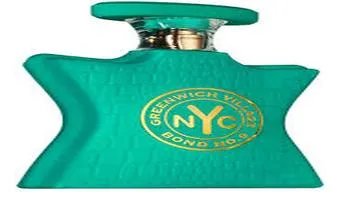A Comprehensive Review of Paints: Colors, Types, and Usage
Paints are a versatile and essential material used for coating surfaces to protect, decorate, and add functionality. Composed of pigments, binders, solvents, and additives, paints offer a wide range of colors and finishes to meet aesthetic and practical needs. Pigments provide the color, while binders form a film to adhere the paint to surfaces. Solvents adjust the paint's viscosity for application, and additives enhance properties such as drying time, durability, and resistance to environmental factors. Paints are used in various sectors, including residential, commercial, and industrial, to protect surfaces from wear, corrosion, and weathering. They also play a crucial role in design and architecture, allowing for creative expression and contributing to the ambiance and identity of spaces.

Paints have been an essential part of human culture and civilization for thousands of years, dating back to the early cave paintings. Today, the array of paints available is mind-boggling, catering to an endless variety of needs, from aesthetic enhancements to functional applications. This review delves into the many facets of paints, exploring their types, uses, and the technological advancements that have revolutionized this indispensable product.
Types of Paints
Paints can primarily be categorized into two types: water-based and oil-based. Water-based paints, also known as latex paints, are popular for their ease of use and environmental friendliness. They dry quickly, emit fewer volatile organic compounds (VOCs), and can be cleaned with just soap and water. These features make them ideal for indoor applications and for those who are environmentally conscious.
Oil-based paints, on the other hand, are known for their durability and rich finish. They take longer to dry but provide a hard, glossy surface that is resistant to wear and tear. This makes them suitable for high-traffic areas and surfaces that require a tough, protective coating, such as doors, trim, and furniture.
Apart from these primary categories, there are specialized paints designed for specific purposes. For instance, enamel paints are known for their hardness and are often used on surfaces that require a durable finish. Chalk paints have gained popularity for their matte finish and ability to adhere to a variety of surfaces without much preparation. Epoxy paints are used in industrial and commercial settings due to their exceptional durability and chemical resistance.
Color and Finish
One of the most significant aspects of paint is the color. The right color can transform a space, evoke emotions, and create a desired atmosphere. Modern technology has enabled paint manufacturers to produce an almost infinite range of colors, allowing consumers to find the perfect shade for any project. Many paint stores offer computer-aided color matching, ensuring that the exact hue can be replicated whenever needed.
The finish of the paint also plays a crucial role in the final appearance of a project. Common finishes include matte, eggshell, satin, semi-gloss, and high-gloss. Matte finishes are non-reflective and great for hiding imperfections, making them ideal for ceilings and low-traffic areas. Eggshell and satin finishes have a slight sheen and are more washable, suitable for living rooms and bedrooms. Semi-gloss and high-gloss finishes are highly reflective and durable, often used in kitchens, bathrooms, and on trim and doors.
Technological Advancements
In recent years, the paint industry has seen significant technological advancements aimed at improving performance, durability, and environmental impact. Low-VOC and zero-VOC paints have become increasingly popular as consumers become more aware of the health and environmental implications of traditional paints. These paints reduce the emission of harmful chemicals, making them safer for both the user and the environment.
Nano-paint technology is another exciting development. These paints incorporate nanoparticles that enhance properties such as scratch resistance, UV protection, and self-cleaning capabilities. For example, some nano-paints can break down dirt and grime on the surface when exposed to sunlight, reducing the need for maintenance.
Thermochromic and photochromic paints are innovative products that change color based on temperature or light exposure, respectively. These paints have potential applications in various fields, from automotive to fashion, offering unique aesthetic and functional benefits.
Application and Usage
The application of paint is an art in itself. Proper preparation is key to achieving a flawless finish. This includes cleaning and priming the surface, choosing the right tools (brushes, rollers, sprayers), and applying the paint in the correct manner. For instance, using a primer is crucial when painting over a dark color or on new drywall, as it provides a uniform base and enhances paint adhesion.
Different surfaces require different types of paint and preparation. Wood surfaces may need sanding and a primer designed for wood, while metal surfaces might require a rust-inhibiting primer. Masonry and concrete surfaces need paints that can withstand alkalinity and moisture.
Conclusion
Paints are more than just a medium for adding color; they are a tool for protection, preservation, and transformation. With the vast array of types, colors, finishes, and technological advancements available, choosing the right paint can be a daunting task. However, understanding the basics of paint types, finishes, and application techniques can help consumers make informed decisions and achieve the desired results.
The future of paints looks promising, with ongoing research and innovation aimed at creating more sustainable, durable, and versatile products. Whether you are a professional painter, a DIY enthusiast, or someone looking to refresh your living space, there is a perfect paint out there for you. So, go ahead and explore the vibrant world of paints, and let your creativity shine.






